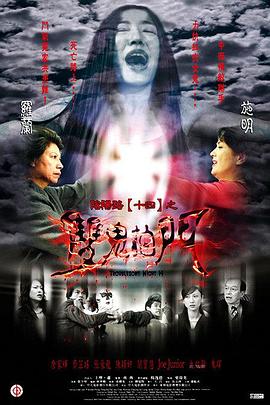德拉克的回归

德拉克的回归
- дё»жј”пјҡ
- жӢүеӨҡдёҮВ·еҚўеҚЎеӨ«ж–Ҝеҹә еҸӨж–ҜеЎ”еӨ«В·з“ҰжӢүиө« иүҫзұідёҪеЁ…В·з“ҰиҗЁзәҰеЁғ еЁҒе»үВ·жіўжҙӣе°ј Jela Buckova Jozef Cierny Pavel Chrobak зұіеә“жӢүж–ҜВ·жҙӣиҝӘжҙҘж–ҜеҮҜ Ivan Macho JГЎn Mildner Andrej Mojzis Jan Pelech еҚўеӨҡз»ҙзү№В·иө–зү№е°” ж–Ҝзү№еҮЎВ·е…Ӣз»ҙеӯЈе…Ӣ Milan Mach
- еӨҮжіЁпјҡ
- HDдёӯеӯ—
- зұ»еһӢпјҡ
- еү§жғ…зүҮ
- еҜјжј”пјҡ
- зҲұеҫ·еҚҺВ·ж јиҺұзәі
- еҲ«еҗҚпјҡ
- жӣҙж–°пјҡ
- 24-08-24/е№ҙд»Јпјҡ1968
- ең°еҢәпјҡ
- е…¶е®ғ
ж’ӯж”ҫ6зө„жҷҡй«ҳеі°жңҹеҸҜиғҪеҚЎйЎҝиҜ·иҖҗеҝғзӯүеҫ…зј“еӯҳдёҖдјҡи§ӮзңӢпјҒ
зӣёе…іи§Ҷйў‘
- 1.жҜ’зӘғд№Ӣеҫ’жӣҙж–°иҮі07йӣҶ
- 2.жҲҳж —дёӣжһ—HD
- 3.жҲҙеӨ«й“¶иЎҢ2еӨ§иҖізӘҝHD
- 4.е…ӯеҚҒеӨ§е©ҡе…Ё48йӣҶ
- 5.йғҪдјҡеҘҪзҡ„е…Ё102йӣҶ
- 6.еҝҶиө·йқһжҙІ иө°иҝӣйқһжҙІз¬¬дәҢз« еҸӢи°Ҡең°д№…еӨ©й•ҝ жҷ®йҖҡиҜқзүҲжӯЈзүҮ
- 7.иҢ¶зӣ—жӯЈзүҮ
- 8.дҫ зӣ—й«ҳйЈһпјҲеӣҪиҜӯзүҲпјүжӯЈзүҮ
- 9.еӨҚд»Үж–°еЁҳ AжӯЈзүҮ
- 10.иҝҷеҚҒе№ҙ第50йӣҶ
- 11.зҒ°е°ҸдјҷжӯЈзүҮ
- 12.еЁ¶дёӘзҡҮеҗҺеҪ“йңёжҖ»з¬¬11йӣҶе®Ңз»“
- 13.е·ҰиҪ®еҘіз…һжҳҹHD
- 14.зҠҜзҪӘзІҫиӢұHD
- 15.е‘Ҫе®ҡе©ҡе® е·Іе®Ңз»“
- 16.еҘ№д»Һжҳҹе…үдёӯиө°жқҘе·Іе®Ңз»“
- 17.еҘ№еңЁжҳҹжІід№Ӣе·һе…Ё80йӣҶ
- 18.жҲ‘еңЁжёёжҲҸйҮҢжүҫдәҶдёӘйңёжҖ»иҖҒе…¬е·Іе®Ңз»“
- 19.жҲ‘жңҖдәІзҲұзҡ„е…Ё44йӣҶ
- 20.еӣҙд№ӢжЈӢHD
гҖҠ德拉克的回归гҖӢеҶ…е®№з®Җд»Ӣ
与(🈯)Stefan Uher和Elo Havatta一样(🕰),Eduard Grecner也是60年代斯洛(luò )伐克新浪潮电影的(de )缔造者之(zhī )一。他的三(👑)部影片《一周(zhōu )七天(tiān )(👁)》(1964)《尼绒月(🕌)亮》(1965)和这部(bù )《徳拉克的回归(guī )(🤯)》都是(🤷)斯洛(luò )伐克新浪潮电影的代表作(🚨)。这(zhè )部叙(xù )(🖲)事方法独特带(🎛)有明显意(🥔)识流风格的(de )黑白影片(piàn )甚至间接影(yǐng )响到(🙀)了(🙉)后(hòu )来法国导演格里耶在捷克拍摄的两部(😍)影(yǐng )片《说(🏯)谎的人(🥕)》和《Eden and After》。 (👊)A special place in the development of feature films is reserved for Eduard Grecner, the creator of just one good film, Dragon Returns (Drak sa vracia, 1967), titled after the nickname of the lead character. After his initial work with Uher, Grecner made his mark as a proponent of the so-called intellectual film, the antithesis of the sociologically, or rather, socially critical film. Grecner's great role model was Alan Resnais, a young French filmmaker who sought to introduce Slovakia to the idea of film as a labyrinth in which meanings are created not by stories, but by complex configurations of dialogue, shots, and various layers of time, thus differentiating film from both literature and theater. In Dragon Returns―(🏷)the story of a solitary hero who is needed by villagers living far in the mountains, but who is rejected by them at the same time because of his detachment―(🏉)Grecner brought the tradition of lyricized prose to life through a whole series of formal aesthetic techniques. Alain Robbe-Grillet immediately developed this idea in the film shot in Bratislava The Man Who Lies (Slovak Muz, ktory luze; French title L'homme qui ment; 1968), and perfected it in Eden and After (Eden a potom, 1970).вҖҰвҖҰ







